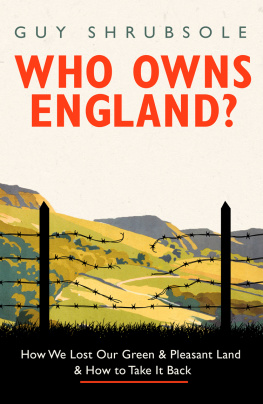Appalachian Land Ownership Task Force - Who Owns Appalachia?: Landownership and Its Impact
Here you can read online Appalachian Land Ownership Task Force - Who Owns Appalachia?: Landownership and Its Impact full text of the book (entire story) in english for free. Download pdf and epub, get meaning, cover and reviews about this ebook. year: 2021, publisher: University Press of Kentucky, genre: Politics. Description of the work, (preface) as well as reviews are available. Best literature library LitArk.com created for fans of good reading and offers a wide selection of genres:
Romance novel
Science fiction
Adventure
Detective
Science
History
Home and family
Prose
Art
Politics
Computer
Non-fiction
Religion
Business
Children
Humor
Choose a favorite category and find really read worthwhile books. Enjoy immersion in the world of imagination, feel the emotions of the characters or learn something new for yourself, make an fascinating discovery.

- Book:Who Owns Appalachia?: Landownership and Its Impact
- Author:
- Publisher:University Press of Kentucky
- Genre:
- Year:2021
- Rating:5 / 5
- Favourites:Add to favourites
- Your mark:
Who Owns Appalachia?: Landownership and Its Impact: summary, description and annotation
We offer to read an annotation, description, summary or preface (depends on what the author of the book "Who Owns Appalachia?: Landownership and Its Impact" wrote himself). If you haven't found the necessary information about the book — write in the comments, we will try to find it.
Long viewed as a problem in other countries, the ownership of land and resources is becoming an issue of mounting concern in the United States. Nowhere has it surfaced more dramatically than in the southern Appalachians where the exploitation of timber and mineral resources has been recently aggravated by the ravages of strip-mining and flash floods. This landmark study of the mountain region documents for the first time the full scale and extent of the ownership and control of the regions land and resources and shows in a compelling, yet non-polemical fashion the relationship between this control and conditions affecting the lives of the regions people.
Begun in 1978 and extending through 1980, this survey of land ownership is notable for the magnitude of its coverage. It embraces six states of the southern Appalachian regionVirginia, West Virginia, Kentucky, Tennessee, North Carolina, and Alabama. From these states the research team selected 80 counties, and within those counties field workers documented the ownership of over 55,000 parcels of property, totaling over 20 million acres of land and mineral rights.
The survey is equally significant for its systematic investigation of the relations between ownership and conditions within Appalachian communities. Researchers compiled data on 100 socioeconomic indicators and correlated these with the ownership of land and mineral rights. The findings of the survey form a generally dark picture of the regionlocal governments struggling to provide needed services on tax revenues that are at once inadequate and inequitable; economic development and diversification stifled; increasing loss of farmland, a traditional source of subsistence in the region. Most evident perhaps is the adverse effect upon housing resulting from corporate ownership and land speculation. Nor is the trend toward greater conglomerate ownership of energy resources, the expansion of absentee ownership into new areas, and the search for new mineral and energy sources encouraging.
Who Owns Appalachia? will be an enduring resource for all those interested in this region and its problems. It is, moreover, both a model and a document for social and economic concerns likely to be of critical importance for the entire nation.
Appalachian Land Ownership Task Force: author's other books
Who wrote Who Owns Appalachia?: Landownership and Its Impact? Find out the surname, the name of the author of the book and a list of all author's works by series.




 WHO OWNS
WHO OWNS



